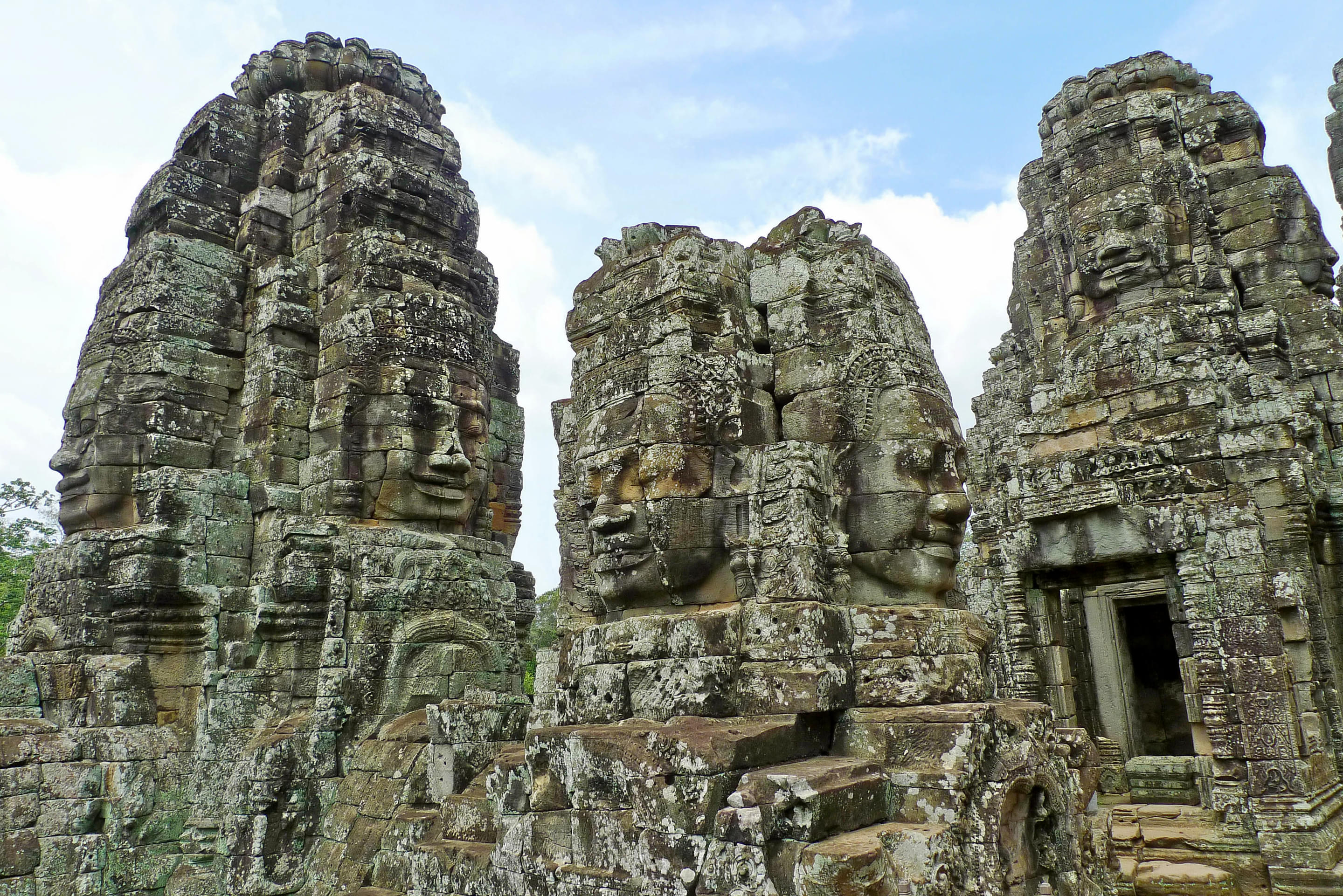About Angkor Thom
There are many places in Siem Reap that capture the attention of history and archaeological lovers. Angkor Thom is one of them.Highlights – Set up during the 12th century by King Jayavarman II, Angkor Thom was the last and most reputed capital of the Khmer Kingdom. Built in pure Bayon style, this site was constructed using a large amount of laterite and massive naga-carrying figures on its 5 towers, each 23m tall. The gates opening to this site has massive representations of “Churning of the Ocean” episode from Hindu mythology. The gate on the south is often used by tourists who come from Angkor Wat to Angkor Thom. Traditionally, the Khmers addressed this as Prasat Angkor Thom. By 1609, many parts of Angkor Thom started getting damaged and what is left today are just the colossal remnants.
Location – Siem Reap.
Timings- 5AM to 6PM.
Price – Part of Angkor Archaeological Park; therefore prices are USD20 (one day pass), USD40 (2-day pass) and USD70 (7-day pass).
Tourism Board Alliances
More Things to do in Siem Reap
Popular Related Attractions
Preah Khan
Located towards the northeast of Angkor Archaeological Park, Preah Khan (meaning, Royal Sword), is a temple wh ...Read More
Krol Ko
A small temple built in the 12th century which has much importance in the traditional aspects of Cambodia is K ...Read More
Neak Pean
The etymology goes back to Sanskrit word for Naga meaning serpent as Neak Pean brings forth the artistic and c ...Read More
Beng Mealea
Being the most mysterious temple in the Siem Reap region, Beng Mealea offers a splendid view to the visitors a ...Read More
Bakong Temple
As Bakong Temple is the first mountain temple sandstone in Cambodia, it has a special space in the culture and ...Read More
The Terrace Of The Elephants
It is the architectural ruins of Angkor that tourist unearth some historic marvels. Terrace of Elephats is one ...Read More
Popular Related Destinations
Why Choose Thrillophilia
Best Domestic Packages
Ladakh Tour PackagesHimachal Tour PackagesKashmir Tour PackagesRajasthan Tour PackagesAndaman Tour PackagesUttarakhand Tour PackagesGoa Tour PackagesSpiti Valley Tour PackagesNorth India Tour PackagesSouth India Tour PackagesNorth East Tour PackagesIndia Tour PackagesDelhi Tour PackagesOoty Tour PackagesGangtok Tour PackagesChikmagalur Tour PackagesSikkim Tour PackagesShimla Tour PackagesManali Tour PackagesRishikesh Tour PackagesMeghalaya Tour PackagesJim Corbett Tour PackagesMussoorie Tour PackagesArunachal Tour PackagesKerala Houseboat PackagesDarjeeling Tour PackagesLeh Ladakh Bike Trip PackagesAuli Tour PackagesNainital Tour PackagesKedarnath Tour PackagesCharDham Yatra PackagesDharamshala Tour PackagesWayanad Tour PackagesKerala Tour PackagesJaipur Tour PackagesJodhpur Tour PackagesUdaipur Tour PackagesGolden Triangle Tour PackagesMount Abu Tour PackagesRanthambore Tour PackageCordelia Cruise PackagesMunnar Tour PackagesCoorg Tour PackagesShillong Tour PackagesMahabaleshwar Tour PackagesOoty Tour PackagesKarnataka Tour PackagesSrinagar Tour PackagesDehradun Tour PackagesLonavala Tour Packages
Best International Packages
Maldives PackageBali Tour PackagesDubai Tour PackagesEurope Tour PackagesSwitzerland Tour PackagesSingapore Tour PackagesThailand Tour PackagesBhutan Tour PackagesSri Lanka Tour PackagesMauritius Tour PackagesSeychelles Tour PackagesBangkok Tour PackagesPattaya Tour PackagesGreece Tour PackagesParis Tour PackagesLondon Tour PackagesPhuket Tour PackagesNorway Northern Lights TourFinland Tour PackagesAmsterdam Tour PackagesItaly Tour PackagesIceland Tour PackagesTurkey Tour PackagesNorway Tour PackagesSpain Tour PackagesGermany Tour PackagesIstanbul Tour PackagesNepal Tour PackagesMalaysia Tour PackagesVietnam Tour PackagesAustralia Tour PackagesSouth Africa Tour PackagesJapan Tour PackagesEgypt Tour PackagesPhilippines Tour PackagesHong Kong Tour PackagesIreland Tour PackagesAfrica Tour PackagesRussia Tour PackagesKenya Tour PackagesPrague Tour PackagesMasai Mara PackagesAntarctica Tour PackagesNew Zealand Tour PackagesSweden Northern Lights PackagesDenmark Tour PackagesIsrael Tour PackagesCambodia Tour PackagesJordan Tour PackagesTanzania Tour PackagesSantorini Tour PackagesAustria Tour PackagesCroatia Tour Packages



.jpg?w=1280&dpr=1)
_II_(1070421461).jpg?w=1280&dpr=1)


.jpg?w=1280&dpr=1)


.jpg?w=1280&dpr=1)


